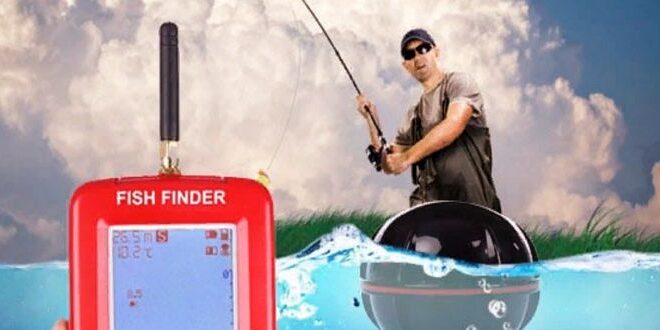What do you do when your fish finder stops working in the middle of a fishing trip? You could try to fix it, or you might be better off just returning home. In this blog post, we’ll give you some tips on what to do if your fish finder breaks down.
We’ll also tell you about some of the most common issues that can occur with these devices and how to troubleshoot them. So, if your fish finder isn’t working properly, don’t worry – we’ve got you covered!
What to do if you can’t find fish with your fish finder
If you’re an avid fisherman, then you know that having a good fish finder is essential to successful fishing trips. A fish finder uses sonar technology to detect schools of fish in the water, so you can know where to cast your line. However, sometimes you may find that your fish finder isn’t working properly, and you can’t seem to find any fish. If this happens, there are a few things you can do. First, check the battery to make sure it’s fully charged. Then, make sure that the transducer is properly mounted and submerged in the water. Finally, if all else fails, try moving to a different location. Sometimes the fish are just hiding! With these tips, you should be able to find the fish in no time.
How to check if the transducer is working
While most fish finders come with transducers, it’s important to double-check that the transducer is working properly before heading out on your next fishing trip. Here are a few simple steps to test your fish finder transducer:
- First, clean the transducer thoroughly. Even a small amount of dirt or debris can impede performance. Once the transducer is clean, mount it on the boat and launch into open water. Make sure to keep the transducer at least 12 inches below the waterline.
- Next, use the fish finder to scan an area for fish. If you see schools of fish showing up on the screen, then your transducer is working properly.
- However, if you don’t see any fish habitat showing up on the screen, then there may be an issue with your transducer. In this case, you may need to adjust the mounting position of the transducer or try using a different type of transducer.
By following these simple steps, you can ensure that your fish finder is working properly and make the most of your time on the water.
How to calibrate your fish finder
Any fisherman worth their salt knows that a fish finder is an essential tool for a successful day on the water. But even the best fish finders can be inaccurate if they’re not properly calibrated. Luckily, calibrating your fish finder is a relatively simple process.
- First, you’ll need to determine the depth of the water you’ll be fishing in. This will help you to properly adjust the setting on your fish finder.
- Next, you’ll need to find a flat, clear area of the lake or river bottom. Once you’ve found such an area, simply lower your transducer into the water and allow it to sink to the bottom.
- After a few seconds, you should see a reading on your fish finder’s display. If the reading is accurate, then your fish finder is properly calibrated and you’re ready to start fishing!
How to troubleshoot common problems with your fish finder
If your fish finder is acting up, here are some troubleshooting tips to help you get back on track.
Check the Batteries
Check the batteries and make sure they are properly inserted and have plenty of juice. If the batteries appear to be fine, then the next step is to check the transducer. This is the part of the fish finder that sends out sound waves and receives their echo, so it’s essential that it is placed in the water correctly.
Ensure the Safe Attachment
Make sure that the transducer is securely attached to your boat and that there are no air bubbles between it and the hull.
Double Check the Display
Check the display to see if there are any loose wires or other damage. Once you’ve ruled out all of these possible problems, your fish finder should be up and running again.
Tips for using your fish finder effectively
To get the most out of your fish finder, there are a few things to keep in mind.
- First, always set the sensitivity to the highest setting. This will help to ensure that you see even the smallest fish.
- Second, be sure to adjust the depth range setting based on the depth of the water you are fishing in. If you set the depth too low, you may miss fish that are deeper down; if you set it too high, you may get false readings from objects that are closer to the surface.
- Finally, don’t be afraid to experiment with different settings until you find what works best for you. With a little practice, you’ll be an expert at using your fish finder in no time.
FAQs
Are all fish finder transducers the same?
No, there are different types of transducers available on the market. The type of transducer you need will depend on the type of fish finder you have.
Do I need a special license to use a fish finder?
No, you do not need a special license to use a fish finder, even beginners or the ones who are not professional fishermen can use it without hesitation.
Do I need to calibrate my fish finder every time I use it?
No, you only need to calibrate your fish finder when you first set it up or if you plan on fishing in a different body of water.
How can you tell if a fish finder is working correctly?
If the display is showing data and the transducer is sending out sound waves, then this is most likely working correctly. However, you should always double-check by calibrating the device in order to get accurate readings.
I hope this article was helpful in troubleshooting your fish finder. Remember, if all else fails, there is always the old-fashioned way of finding fish: by using your eyes and ears. Good luck and tight lines!
 HammBurg Be informed with latest news, reviews, entertainment, lifestyle tips, and much more.
HammBurg Be informed with latest news, reviews, entertainment, lifestyle tips, and much more.




